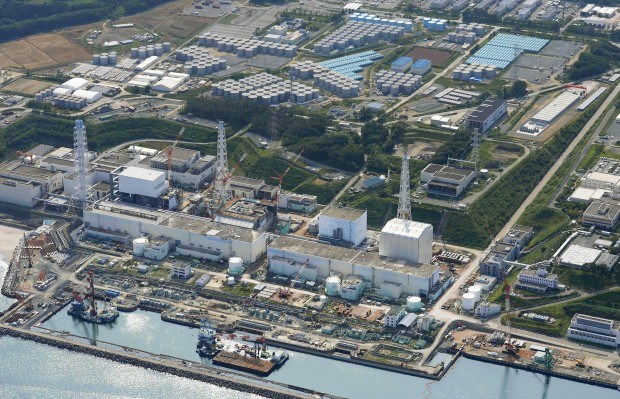Three years after Japan closed all of its nuclear plants in the wake of the Fukushima meltdown and Germany decided to shut its industry, developing countries are leading the biggest construction boom in more than two decades.
Almost two-thirds of the 70 reactors currently under construction worldwide, the most since 1989, are located in China, India, and the rest of the Asia-Pacific region. Countries including Egypt, Bangladesh, Jordan and Vietnam are considering plans to build their first nuclear plants, according to Bloomberg New Energy Finance in London. Developed countries are building nine plants, 13 percent of the total.
Power is needed as the economies of China and India grow more than twice as fast as the U.S. Electricity output from reactors amounted to 2,461 terawatt-hours last year, or 11 percent of all global power generation, according to data from the Organization for Economic Cooperation and Development and the International Energy Agency. That’s the lowest share since 1982, the data show.
“We see most of the constructions in the growing economies, in the parts of the world where you see strong economic growth,” Agneta Rising, the head of the World Nuclear Association in London, said Sept. 24 by e-mail. “In many developed countries there is a large degree of policy uncertainty concerning nuclear.”
Power Needs
China’s electricity consumption is forecast to jump 63 percent by 2020 to 7,295 terawatt-hours from 4,476 terawatt- hours in 2011, while India’s demand is predicted to grow by 45 percent from 2010 through 2020, according to the U.S. Energy Information Administration. Over the same period, demand growth in 22 European members of the OECD is forecast to be 3.6 percent.
Nations are diversifying their energy sources as Germany and other developed countries increase the use of solar and wind power to limit emissions of greenhouse gases blamed for floods, changing weather patterns and rising sea levels. They are also seeking to boost energy independence as the conflict in Ukraine threatens 30 percent of Europe’s gas supplies.
China plans to complete 29 new reactors from 2018 through 2030, according to estimates by New Energy. That would more than double the country’s fleet to 49, according to World Nuclear Association data.
New Projects
Shanghai Electric Group closed 5.1 percent higher in Hong Kong Friday, a gain of 15 percent from Sept. 19, after China Securities Journal reported that China will allow construction to start on four coastal nuclear power projects with a combined capacity of more than 10 gigawatts.
India plans six new units that would boost fission power output by 81 percent by 2030, while U.S. utilities plan to build five new units, according to New Energy’s Global Nuclear Market Outlook dated Sept. 16.
European power generators are building four new units, including the 1,600-megawatt Olkiluoto-3 project in Finland, which has been delayed until 2018 from its original 2009 start.
Once the world’s biggest planned reactor, Olkiluoto-3 is being constructed by Paris-based Areva SA and Siemens AG of Munich. Toshiba Plant Systems and Services Corp. of Japan, Westinghouse Electric Co. of the U.S., Canada’s SNC-Lavalin Group Inc. and Russia’s AtomStroyExport also build atomic plants.
The capital cost of a U.S. reactor starting in 2019 is more than four times that of a new gas plant and 19 percent more than a conventional coal unit, according to the EIA.
Limited Lifespan
Most atomic reactors currently operating have a design lifespan of 30 to 40 years, according to the World Nuclear Association. The current average age of nuclear units is 29. Construction peaked in 1984 when 83 reactors were being built, according to United Nations’ International Atomic Energy Agency data compiled by New Energy.
“Nuclear is a capital-intensive investment, but it gives over a long time a very good, reliable, large-scale base load and it operates 24/7, which some of the other energy sources don’t,” Rising, who was vice president and head of environment at Swedish utility Vattenfall AB for eight years, said. “It also gives independence: you won’t be dependent on a pipeline to a country or a certain gas contract, or to price instability.”
More than 60 percent of the global power plant investment from this year through 2035 will be in renewables, according to the IEA’s World Energy Outlook. Fossil-fuel plants will account for 30 percent and nuclear the remainder, the Paris-based group said.
Nuclear plants may supply as much as 12 percent of total power production by 2050, according to the IAEA. The share of global electricity generation met by atomic plants fell for a 12th consecutive year to less than 11 percent in 2013, BP Plc data show.
Fukushima Effect
Eight countries including Germany, Italy and Taiwan halted construction programs or closed plants after an earthquake and tsunami caused a meltdown at the Fukushima-Dai-Ichi plant in Japan in March 2011, according to Chris Gadomski, the head of nuclear research at New Energy in San Francisco. China stopped building reactors for two years while the United Arab Emirates began constructing two units the week after the accident, he said.
Germany permanently closed eight of the 17 atomic plants that were operating in 2011, with the remaining 11 units scheduled to shut from May through 2022. Japan hasn’t restarted any of its 48 plants even as two facilities were cleared to resume operating by the country’s nuclear regulator. Iran and western countries led by the U.S. remain deadlocked over the Middle Eastern nation’s plans for nuclear power.
“Fukushima has affected the way people think about technology in general. Everyone is now looking deeper into what could have been done, what was missed, can it happen here,” Ayhan Evernsel, a spokesman at the IAEA, said Aug. 27 by phone from Vienna. “It has not changed the energy hunger in developing countries; it has not affected them.”





















 The Supreme Court Just Complicated Employer Diversity Initiatives
The Supreme Court Just Complicated Employer Diversity Initiatives  Executives on the Move at AIG, White Mountains, Vermont Mutual
Executives on the Move at AIG, White Mountains, Vermont Mutual  Allstate’s Safe Driving App Helps Reduce Chance of Collision by 25%
Allstate’s Safe Driving App Helps Reduce Chance of Collision by 25%  Study: U.S. Companies Facing Class Actions at Highest Level in 13 Years
Study: U.S. Companies Facing Class Actions at Highest Level in 13 Years 




